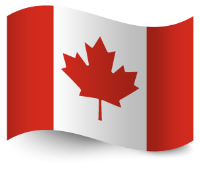If you've ever had a cold sore outbreak, you probably don't need us to tell you how irritating they can be.
Unfortunately, there is much stigma around cold sores which information and education can perhaps help to eliminate. So, whether you're someone who suffers from cold sores or you know somebody who does, we're here to offer you more information on this common condition, enabling you to understand how the symptoms of cold sores (or fever blisters, as they are sometimes known) may be more effectively understood and treated.
Cold sores and the herpes simplex virus
In a nutshell, cold sores are caused by the herpes simplex virus (HSV-1) for which there is currently no cure.
Cold sores are incredibly common. The World Health Organisation estimates that 67% of the population under 50 is infected with HSV-1, the strain of the Herpes Simplex Virus that causes cold sores.
While this may sound like a lot, many people who carry the virus will never display symptoms. It is thought that the virus lies dormant in the majority of carriers and does not cause any visible illness. This means most people who carry the virus remain completely unaware they have it. However, for those who do suffer the symptoms – painful blisters on their lips and the surrounding area – the virus is likely to be a recurring nuisance throughout their whole life.
How does the herpes virus infect people?
Highly contagious, HSV-1 is usually transmitted through oral-to-oral contact. Most people will be exposed to the virus during childhood after coming into close contact (such as a kiss) with an adult carrying the virus.
Often the initial infection has hardly any symptoms, but in some cases, it can cause herpetic gingivostomatitis. This affects the gums and mucosa (the lining inside of the mouth) and the infected person will present flu-like symptoms. In any case, this first infection is self-limited and subsides in a few days.
During this stage, the herpes virus travels along the infected zone's sensory nerves, reaching the structures where the corresponding nerve cell bodies (ganglia) are present. Most of the time, this structure is the trigeminal ganglion, which has sensory nerves that cover a large part of the face, including the lower part where the mouth is.
Inside the ganglia, the herpes virus goes into a static state and could remain dormant like this for weeks, months, years, or maybe for the rest of the individual's life. In case of the latter, the carrier may remain unaware they have the virus and therefore are in danger of passing it on, as the virus can be transmitted between people even when there are no visible symptoms.
Throughout this period – called the latency stage – no new virus is produced and it is very difficult, if not impossible, to reach the hidden virus with medical treatments. This is why, at present, there is no cure that can totally eliminate the herpes virus from an infected person. Treatments can only really help to reduce the symptoms.
In members of the population who do experience recurring outbreaks, the virus will come out of its dormant state and travel back along the sensory nerve fibres to the skin cells, where it will begin to replicate itself using enzymes present inside the cells. Once this has happened, the virus will leave the cell – which will now die as a result of the infection – and continue moving from one cell to the next.
Precautions to take when you have a cold sore
Cold sores are contagious because the virus can be present in the blisters and fluid – which can be spread – as well as in the saliva before the cold sore even appears. It is therefore crucial that those infected take precautions to avoid others becoming infected and special care should be taken around babies or very young children whose immune systems are not fully matured.
The virus is unlikely to cause much harm for adults who aren't immunocompromised, but in young and vulnerable people, such as adults with severe immunodeficiency either caused by a disease or due to treatments such as chemotherapy, an HSV infection can lead to severe, potentially life-threatening complications.
What triggers a cold sore outbreak?
For carriers who do suffer from regular outbreaks, there are certain triggers that may affect the immune system and reactivate the virus. These triggers include stress, overexposure to UV light, some foods or drugs, and fever (febrile illness) – all of which cause the immune system to weaken. Furthermore, intense dental work and laser skin treatments can induce a cold sore and, in women, menstruation can also be a trigger. Eating foods that are high in arginine (including grains, nuts and seeds, and chocolate), can also trigger an outbreak, as the amino acid arginine encourages the replication of the virus. The amino acid lysine, found in dairy, meat products, and many fruits, balances out arginine and has the opposite effect.
In most people who experience cold sores – 20-30% of the population – HSV-1 will only cause the typical appearance of localised blisters and ulcers that are commonly associated with the virus. Only in cases of severe immunodeficiency might a cold sore episode cause more serious health issues.
Some of the more serious complications of cold sores include herpetic whitlow, which can occur if the fever blister comes into contact with an open cut on the fingertip and causes swelling and lesions on the finger; Herpetic keratoconjunctivitis, which affects the eyes; and eczema herpeticum, which is a rare but serious complication occurring when a cold sore blister comes into contact with an outbreak of eczema and causes a cluster of blisters.
Again, these complications are rare and in most cases, the virus will only cause the appearance of a blister, which without treatment will likely heal within 12-14 days.
Still, the irritating symptoms suffered by those who have frequent cold sore outbreaks can be an issue. Consequently, a lip protectant such as Herstat, which can help alleviate the symptoms of cold sores by helping to prevent dry, cracked and sore lips, can be found to be highly beneficial during an outbreak.
Herstat lip care
Herstat Lip Care Ointment can be applied to the skin at any stage of a cold sore outbreak – from the first tingle to the final ulcer.
You can start applying Herstat when the first sensations of an outbreak present themselves. This can help prevent the lips from dryness at this early stage of the outbreak. Nevertheless, even if the ointment isn't applied until after the cold sore has appeared, it can still help to soothe some of the symptoms by preventing the area from drying out and cracking, and it helps to create a moist environment which is perfect for healing. Herstat's effectiveness has been proven in clinical trials, where participants found the ointment helped reduce the symptoms much better than a placebo.
For further information about Herstat Lip Care Ointment, please visit our Product Information or Frequently Asked Questions pages.
If you'd like to try Herstat for yourself, please visit the Buy Products page to make a purchase.












